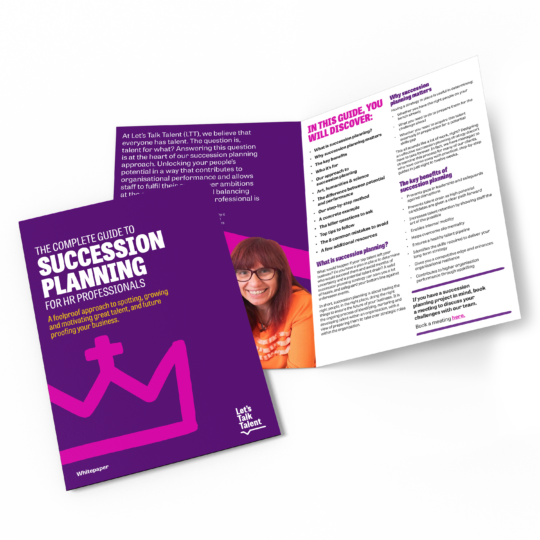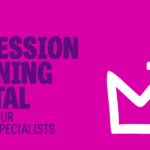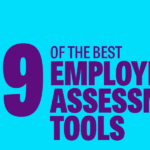Creating an effective succession strategy in a competitive market
As HR professionals, we are often busy enough with the day-to-day that planning for the future can take a backseat. There’s plenty of time, right? For one of our clients, future-proofing their business quickly became the number one priority as they started to struggle to fill key roles during the recent skill shortage. Faced with a skills gap and finding it difficult to fill some crucial positions, they called in the experts. And Let’s Talk Talent answered the call.
This example isn’t unique and we have seen many organisations faced with the same challenges. In a competitive industry and with a tight labour market, these issues can have a huge impact on a business’s performance. Implementing a succession planning plan ahead of time (see how to on our succession planning service page) can be the difference between struggling to reach organisational objectives and having the right people in place to ensure you reach them.
However, there is more to succession planning than putting a name on an org chart, and there are ways to ensure your efforts do pay off. Here is the list of the most important things we’ve learnt throughout our years of implementing succession planning strategies, with real-life examples from this client’s case study to help bring it to life.
Why succession planning is important
Succession planning is about having the right people, in the right roles, with the right skills, doing the right things. Our client found this difficult to achieve as changes brought on by the COVID pandemic created a much more competitive market, with a high number of rival businesses all depending on a small pool of staff.
That’s where succession planning comes in. Having a strategy in place can help you determine if you have the right people on your bench already, and what you need to do to help prepare them for the challenge ahead. Or whether you need to acquire this talent externally in preparation for a potential skills gap.
In this case, our client was hoping to secure future candidates for the role of centre directors, a strategic position requiring the job holder to supervise several nurseries spread over a large area. They prioritised geography over ambition and assumed staff would be reluctant to uproot their families to take up a new role, which limited the number of suitable candidates.
The jump from supervising one centre to supervising several was also a big one, and the organisation was worried that selected candidates would struggle with the skills gap. Just nominating people and leaving them to it was not going to be a viable option, and we needed to ensure our strategy would be comprehensive enough to be successful.
Common succession planning mistakes and how to avoid them
Here are some of the pitfalls we were careful to avoid when creating our client’s succession planning strategy.
1. Keeping your succession planning exercise secret
As potential promotions can be sensitive topics, many organisations tend to keep their succession plans under wraps. However, doing so doesn’t lead to a solid strategy. “First of all, your chosen candidates may not want to move up or be considered for a certain role,” says Jo Taylor, MD at Let’s Talk Talent.
Here, our client realised that employees were much more willing to move than initially thought, and that by not having initial discussions with them, they were narrowing their pool of candidates and limiting their options. Keeping only a select few in the know could also lead to unrealistic expectations, or an ‘us vs them’ talent culture as a small, selected sample of high potential candidates may feel they should receive additional resources and support and this is not inclusive is it!
2. Not considering all employees in your succession planning exercise
There is a major difference between performance and potential. One looks at a person’s current contribution, the other at what could be delivered in the future. Potential could be hiding anywhere, from the mailroom to the C-suite. It’s important to consider everyone when building your succession planning approach, and to grade everyone using the same criteria.
With our childcare client, we began by creating templates for managers to complete and return to us. Whilst this sounds simple enough, doing so required a fair amount of work. We first met with the C-suite and consulted them on the rating scale, then briefed the area directors and ensured we created the grid using clear performance language. And that was only step 1!
3. Not briefing your managers
Managers are a key part of your succession plans, and they each hold different definitions of performance. It’s important to take them along on your journey, and give them the tools to provide fair and consistent assessments. Case in point: we asked managers to use our grid to rate candidates’ potential. We then calibrated this data with them to ensure a consistent understanding of the main criteria used, and of the difference between potential and performance. Pre-calibration and post-calibration data turned out to be drastically different.
4. Not getting executive buy-in for your succession planning strategy
Identifying candidates is only the start of your strategy. The next part is all about getting these people ready to step up to the challenge. This requires organisational resources, including L&D budget, manager support, time for training, etc. Without exec buy-in, achieving the right results could prove quite difficult.
5. Not setting budget aside to train up your potential successors
As mentioned, training is a crucial component of your succession planning strategy and your plan should highlight the resources you will put at your people’s disposal once they’ve been identified as high potential candidates.
This could be in the form of formal training, sure, but don’t forget the other 80% of the training equation (read our article on the 70-20-10 model here), including on-the-job training and networking opportunities. “Don’t just expect people to learn additional skills while juggling the same workload,” says Jo. “Training people also means giving them the time, space and support to do so in a safe environment.”
For this particular client, once key candidates had been assessed, LTT provided recommendations for a full 12-month programme in order to identify the skills needed to fill each role and to upskill selected people as needed.
6. Rolling out your succession plans all at once
At Let’s Talk Talent, we always recommend adopting an agile approach. This usually means starting with a pilot phase, gathering data from the roll-out and course-correcting before expanding to other areas of the business. Of course, implementing a company-wide initiative is possible, but you may deprive yourself of some precious insights which may have helped you reach desired results.
7. Focussing only on people
Succession planning is about people, sure, but it’s also about ensuring you have them in the right positions to fulfil your organisational objectives. Make sure you review the critical roles that will add value to your business. Assess current ones, but think of the future and the positions you will need to have in place to deliver your strategy. Then, consider the right people for these particular roles. Starting with people and looking to find the right place for them could leave you with key gaps.
Succession planning: progress not perfection
Whilst it’s true that the criteria listed above could help the success of your succession planning exercise, the important thing is to get started. Don’t wait to have the perfect setup. Start small, have key career conversations, and provide as much learning and development support to your high potential candidates as you can.
Once the ball is rolling, expand your reach and start creating the join up between each of your HR pillars, linking succession planning with your L&D strategy, your performance management process and your leadership and management development programme.
“Remember that transparency is key,” states Jo. “Don’t hide what you’re doing, and think beyond your C-suite. Consider all important roles, and make sure you have open conversations to assess both candidates’ interest, and their readiness.”
If, like our client, you’d like a bit of support to determine who you have on your bench, don’t hesitate to book a call with us. Or start by visiting our succession planning services page where you’ll find plenty of free resources, including our succession planning whitepaper.
Related Succession Planning resources:
Do you need some help getting started with your internal mentoring programme? Book a call with us and let’s set up a briefing meeting. Or visit our Succession Planning page for more free resources.




